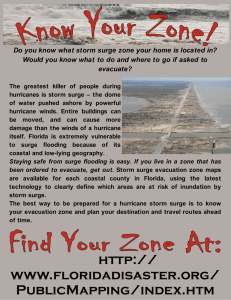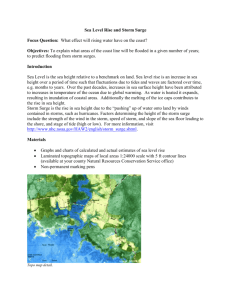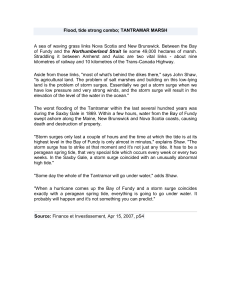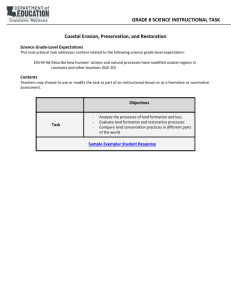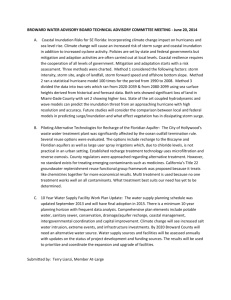Storm Surge Analysis Along the U.S. Gulf Coast
advertisement
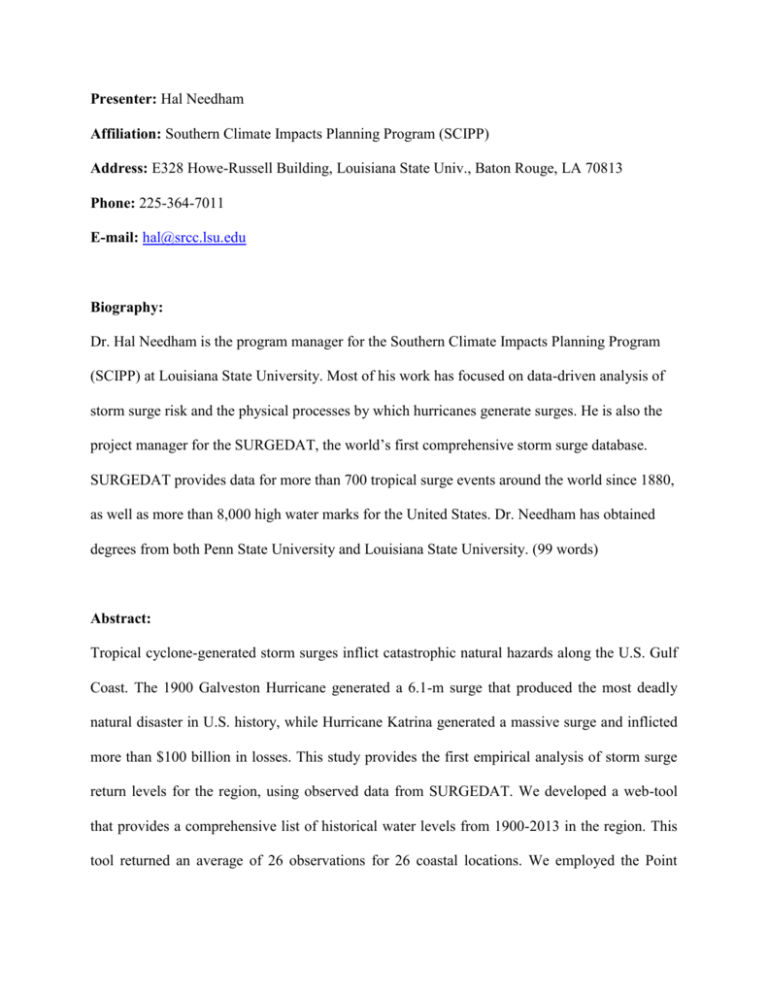
Presenter: Hal Needham Affiliation: Southern Climate Impacts Planning Program (SCIPP) Address: E328 Howe-Russell Building, Louisiana State Univ., Baton Rouge, LA 70813 Phone: 225-364-7011 E-mail: hal@srcc.lsu.edu Biography: Dr. Hal Needham is the program manager for the Southern Climate Impacts Planning Program (SCIPP) at Louisiana State University. Most of his work has focused on data-driven analysis of storm surge risk and the physical processes by which hurricanes generate surges. He is also the project manager for the SURGEDAT, the world’s first comprehensive storm surge database. SURGEDAT provides data for more than 700 tropical surge events around the world since 1880, as well as more than 8,000 high water marks for the United States. Dr. Needham has obtained degrees from both Penn State University and Louisiana State University. (99 words) Abstract: Tropical cyclone-generated storm surges inflict catastrophic natural hazards along the U.S. Gulf Coast. The 1900 Galveston Hurricane generated a 6.1-m surge that produced the most deadly natural disaster in U.S. history, while Hurricane Katrina generated a massive surge and inflicted more than $100 billion in losses. This study provides the first empirical analysis of storm surge return levels for the region, using observed data from SURGEDAT. We developed a web-tool that provides a comprehensive list of historical water levels from 1900-2013 in the region. This tool returned an average of 26 observations for 26 coastal locations. We employed the Point Process (PP) model of Extreme Value Theory as well as a Logarithmic Plotting (LP) method to estimate 10-, 25, 50-, 100-, 200-, and 500-yr return levels in the region. A two-tailed Kolmogorov-Smirnov statistic indicated the LP method provided a better fit to observed data, as the PP method underestimated most water levels. Although the LP method is not designed to estimate return levels beyond the length of the dataset, the results are still useful for predicting out to the 100-yr level. This method showed considerable geographic variability in return levels, as the highest 100-yr level was 7.95 m at Bay St. Louis/ Pass Christian, Mississippi, and the lowest level was 2.53 m at Cedar Key, Florida. Such results will be useful for coastal planners, scientists and engineers, restoration experts, insurance professionals, and the storm surge modeling community. (237 words)
